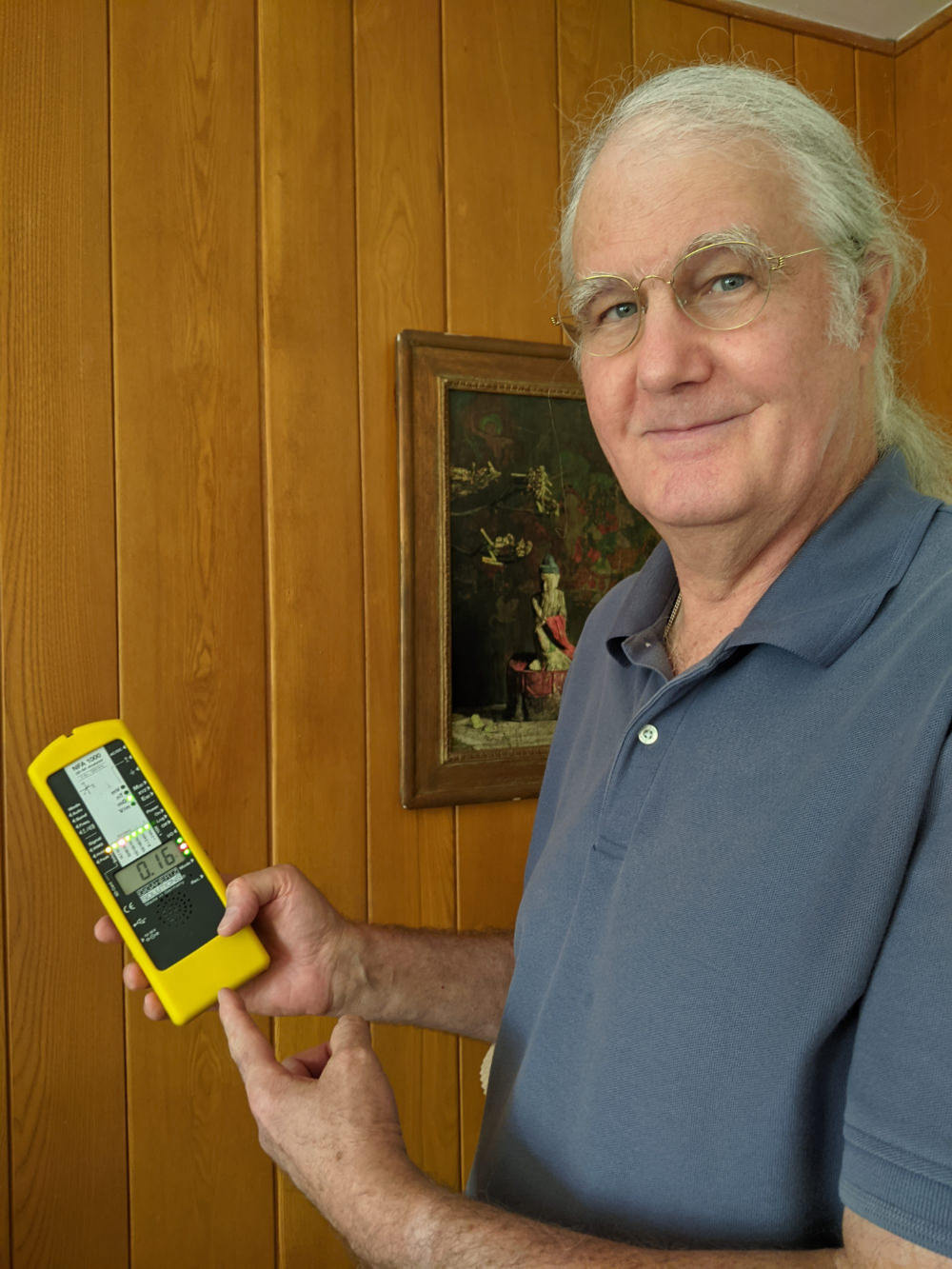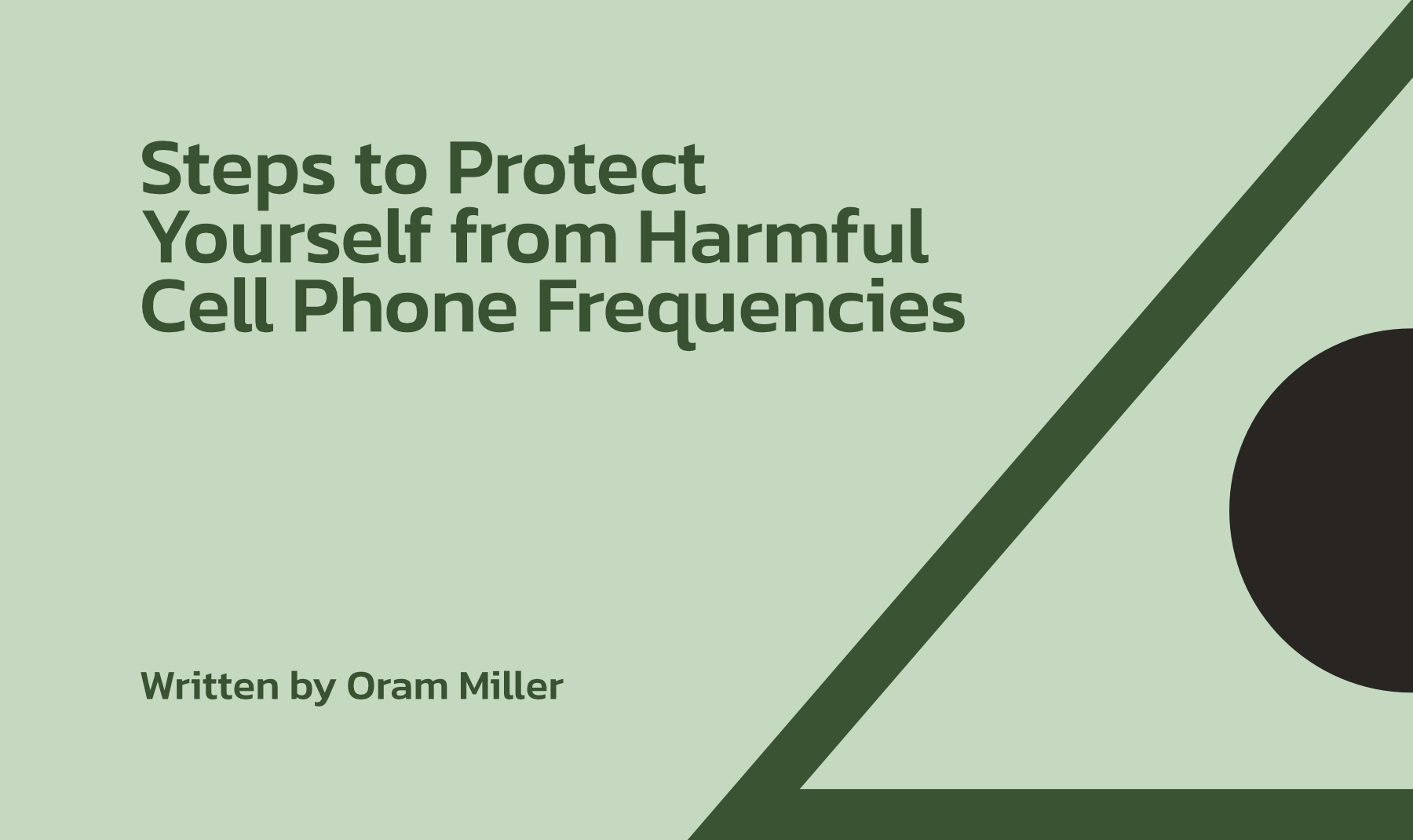To see healthy choices for baby monitors, click here.
Introduction
Many people want surveillance cameras around their home and property for safety. This is accomplished these days with a wide variety of wireless cameras and microphones available on the market today.
The problem is, these wireless cameras emit strong radio frequency EMFs that can cause ill health for the whole family, particularly in bedrooms. Even if the camera and its transmitter are several feet away from where you sleep or sit, the RF level can easily exceed internationally accepted safe exposure levels for nighttime exposure as set by the EMF Safety Community and the building biology profession.
To provide a safe sleeping and living environment for everyone, we recommend using a hardwired device with a microphone and camera for your surveillance system. These would be connected to a monitor of some type (iPad, laptop, closed-circuit TV) in another room with an Ethernet, telephone or coaxial connection.
Surveillance Cameras
One option is to use any camera and microphone that has a hardwired Ethernet connection. Here are two models that have an Ethernet port on the back:
One such model is the D-Link Indoor Security Camera 2 Way Audio, Pan & Tilt WiFi HD 1080p, Motion Detection, Night Vision, Record MicroSD (DCS-8525LH-US) (Renewed). The wireless transmitter shuts off when you plug in an Ethernet cable. This is what Amazon refers to as a “Renewed” product, meaning, “Product works and looks like new. Backed by the 90-day Amazon Renewed Guarantee.” See the link below for further details. Available from Amazon by clicking on the following text link or on the image below.
D-Link Indoor Security Camera 2 Way Audio (DCS-8525LH-US)
Another such model is the D-Link Indoor HD Security Camera with Day & Night Vision, Motion and Sound Detection, Model DCS-2132L-ES. The wireless transmitter shuts off when you plug in an Ethernet cable. Unfortunately, D-Link has discontinued this model, but you may be able to find it, new or used, on E-bay, by clicking here.
You would plug an Ethernet cable into the back of the camera/microphone (both D-Link models above have such an Ethernet port). You could bring that Ethernet cable from the surveillance camera(s) to the room where the router is located. That Ethernet cable can be run through your attic or crawl space/basement and to the router through a hole in the ceiling or floor. Or, have a professional Low Voltage Audio Video (AV) or security contractor run Ethernet cables through your attic, crawl space/basement and wall to make these connections.
Another option to connect your surveillance cameras to your router or monitor with hardwired Ethernet cables is to use a power line network adapter or Multimedia over Coaxial Alliance (MoCA) device. These use electric circuits or TV coaxial cables, respectively, in your walls to carry Internet from your camera(s) to your router. This allows you to avoid Wi-Fi without having to install Ethernet cables. This is discussed on the Safer Use of Computers page in the section entitled, Network Adapters Using Electric Circuits. (Be aware that power line adapters can raise dirty electricity EMF levels, which may be able to be mitigated with plugged-in dirty electricity filters. MoCA adapters, on the other hand, do not generate any dirty electricity.)
As mentioned, the D-Link cameras and microphones that I link to above have an Ethernet jack on the back. I have verified that when you plug in an Ethernet cable that is connected to a working router, the Wi-Fi shuts off and is disabled. The camera and microphone work by sending images and sound from your surveillance cameras over the Ethernet cable. You then go online on your desktop or laptop computer to D-Link’s secure website to see and hear your through these cameras.
Closing Thoughts
You can also download an app on a mobile device (cellphone or tablet) to watch and listen that way, although that would be exposed to radio frequency EMFs from the cell phone or iPad being used as a monitor. You can, however, connect your iPhone and iPad to the web in a hardwired way while it is set to Airplane Mode. Click here for details.
Your Low Voltage/AV or security contractor may have other hardwired solutions to offer to you to set up a surveillance camera/microphone system for your house without Wi-Fi.

BBEC, EMRS, Certified Building Biology™ Environmental Consultant and Electromagnetic Radiation Specialist and Healthy New Building and Remodeling Consultant. Providing On-Site EMF Evaluations for Existing and New Homes and Offices in Los Angeles, Orange, Ventura, Riverside and San Diego Counties and Nationwide by Telephone and Skype. Based upon the principles of Building Biology™.






